After weeks of uninhibited partying on South Beach by spring breakers, Miami Beach police turned away throngs of people — many of them Black and brown — from world-famous Ocean Drive Saturday night using a SWAT truck, pepper balls and sound cannons.
The tactics were intended to enforce an 8 p.m. curfew announced only hours earlier as a means to rid the city of what police and politicians have described as unruly — and sometimes violent — late-night crowds. And they appeared to have the desired effect: by mid-evening, police tweeted out a picture of the empty intersection at Ocean Drive and Eighth Street.
But the use of force to clear out people of color from South Beach alarmed some Black leaders. And if Miami Beach has openly recoiled at the behavior of at-times chaotic crowds filling the city’s entertainment district every weekend, some in Miami are having a similar reaction to the way the city and its police have handled the presence of thousands of people of color.
“I was very disappointed,” Stephen Hunter Johnson, chairman of Miami-Dade’s Black Affairs Advisory Committee, said Sunday morning. “I think when they’re young Black people [on South Beach], the response is, ‘Oh my God, we have to do something.'”
Videos on social media showed police arriving on Ocean Drive Saturday evening to find a massive crowd still on the street after the curfew kicked in. Videos also showed police turning on their sirens and, at one point, firing pepper balls into a crowd, sending people scrambling.
‘If you can’t keep streets safe, you’re not doing your job’
Police Chief Richard Clements told the Miami Herald Sunday that Saturday night’s incident would be reviewed internally. Speaking specifically to the scenes Saturday night, he said his officers only fired the tear gas as the crowd began to surge toward them. He said police wouldn’t fire the pepper balls simply to break up a crowd of people.
“I think officers felt threatened at the time,” the chief said. “There has to be an element there of either the crowd fighting or coming at officers.”
He said Sunday on WPLG’s “This Week in South Florida” that spring break this year has been uniquely challenging for police due to Florida’s lax COVID-19 rules that attract planeloads of tourists. He also noted “backlash” from the police killing of George Floyd in Minneapolis last summer that make police confrontations more common.
“It’s been a different environment this year,” he said.
Clements said police have been “tolerant” of peaceful partying in the streets, but he said there are some among the crowds that have no intent of following the law. And when officers try to make arrests, crowds encircle them, he said.
People threw bottles at police and put their hands on officers, police said. During spring break alone, at least five officers have been hurt, police say.
Miami Beach Mayor Dan Gelber said the curfew and causeway closures announced at 4 p.m. Saturday were aimed to prevent more violence and disorder that have accompanied the large crowds of visitors in South Beach. He described the city as a powder keg ready to blow. Residents cheered the crackdown, some saying the lawlessness in the streets has made them fearful to leave their homes.
“We’re not targeting a group of people, we’re targeting conduct,” he said on WPLG. “If you can’t keep streets safe, then you’re not doing your job.”
‘None of this is new’
But at a time when the country is undergoing a racial reckoning, the optics of cops grappling with crowds and city leaders condemning a largely Black group of visitors was been unavoidable. Daniella Pierre, president of the NAACP’s Miami-Dade chapter, tweeted “#SpringBreakingWhileBlack” Saturday night. She later added: “Unacceptable to say the least.”
Even before Saturday night’s confrontation between police and party-hungry crowds, frustration with the way the city was policing — and talking about — spring break crowds on South Beach was growing among Black leaders in Miami. Diane Connolly Graham, a member of Miami Beach’s newly formed Black Affairs Advisory Committee, told the Miami Herald Friday that “we have to realize that we are definitely fighting an undertone of racism” among the city’s largely white resident base, some of whom have called Black spring breakers “thugs” or “animals” on social media.
While denouncing the fights and police confrontations that have emerged among the crowds, Connolly Graham and others said city leaders should have funded cultural programs for its guests to give vacationers something to do other than drink in the street.
GOPUSA Editor’s Note: Please keep in mind that this is a mainstream media story which may or may not contain politically biased language. The source of the story is in the dateline. We publish the story for the purpose of informing our readers.
What is GOPUSA? Read our About Us page to find out.
Johnson, the chairman of the count’s Black advisory board, likens the city’s tactics to a “war on spring break.” He said Saturday night’s show of “unnecessary force” was “performative” for residents who’ve been calling City Hall to complain. He noted that police only gave tourists and businesses a few hours notice on the curfew and began firing pepper balls before 10 p.m. It reminded him of how Miami police handled Black Lives Matter protesters over the summer, he said.
“The way that they have acted and the way that they have approached this entire situation, it is a product of racism,” Johnson said earlier this week. “None of this is new…the thought and the idea is, ‘Let’s get more aggressive with our policing. Let’s scare them.”
City leaders — who’ve been fighting for decades to control a party scene tourism boosters once courted — chose not to sponsor any programming this year, citing the pandemic. Instead, ahead of spring break, Miami Beach approved a $2 million plan that included a stepped-up police presence in South Beach and a marketing campaign created to warn college-age tourists that people who get out of line will be arrested. Still, the crowds came.
Recent weekends were marred by confrontations between cops and crowds. Police said Friday that at least five officers have been injured. A 61-year-old taxi driver was reportedly injured after revelers danced on his car. A shooting near Ocean Drive on Monday killed a 27-year-old Miami Beach resident.
The big crowds, often drinking alcohol in public, have packed South Beach’s 10-block entertainment district — at times creating a panic by rushing down city streets to avoid police-deployed pepper balls or the sound of gunshots. On Friday, the Clevelander South Beach, one of the city’s most recognizable brands, shut down its food and beverage operation, citing unruly crowds and fights.
Police Spokesman Ernesto Rodriguez said about twice as many people have been arrested compared to last year. The city has made about 1,000 arrests since the first week of February, he said. They have also seized about 80 firearms, including four on Saturday night.
Clements, who said he was “alarmed” by the number of firearms he’s seeing, said most of the problem seems to be that people who drive here are bringing weapons down from open-carry states, where they are permitted.
Pierre, the president of the NAACP’s Miami-Dade chapter, said she understands the city’s need to maintain order in South Beach. But threatening spring breakers with arrest before they even land at the airport is combative and unbecoming of a tourism destination, she said.
“I’ve never vacationed anywhere and saw signs that said ‘vacation responsibly or be arrested,'” Pierre, a graduate of Miami Beach Senior High, told the Miami Herald. “The message isn’t hospitable, it’s punitive.”
‘They dehumanize us’
Saturday’s events were the latest in a series of eruptions between Miami Beach police and partiers in the entertainment district.
When Black tourists picked Miami Beach as a popular party spot on Memorial Day weekend 20 years ago, the city — which was caught unaware by massive crowds — responded by flooding the city with police. After 2011, when a reckless driver fleeing a traffic stop nearly ran over an officer and was killed in a hail of bullets by police, the city responded by making the police presence more intense.
In recent years, spring break has drawn more Black tourists — and more cops. Confrontations circulate quickly on social media. Last year, when video of rough arrests went viral, Johnson, Pierre and then-NAACP Miami-Dade Chapter President Ruben Roberts called for Police Chief Rick Clements to resign.
Ailene Torres, a 46-year-old Afro-Latina South Beach resident, said she’s also concerned about the way some Miami Beach residents talk about Black tourists publicly and online. On private Facebook pages, Torres said, some have called spring breakers “animals.” One person, she said, went as far as to recommend someone “turn on the hose” to disperse crowds.
“They dehumanize us,” Torres said.
Finding solutions
Rather than throw up their hands in exasperation, Johnson and Pierre said they want to work with the city to develop events for spring break in the future. They said they felt hopeful that race relations would improve now that the city has established its Black Affairs Advisory Committee.
Pierre said she has met with Gelber and Clements about the city’s handling of spring break. After and altercation between crowds and police Friday, Pierre visited Ocean Drive personally to witness the interactions between police and visitors.
“I’m disappointed that in the 21st Century, years after Jim Crow laws have ended, we still have to have conversations and meetings on how to treat people fair,” she told the Herald.
Miami Beach Commissioner Ricky Arriola, who came out against the curfew, agrees that the administration should embrace its Black tourists by setting up food festivals and concerts to make the crowds feel welcome.
The city, which attempted to set up a spring break event last year, scrapped its plans to do something similar this year because of concerns about attracting large crowds during a pandemic. The commission still voted this year to subsidize the South Beach Wine & Food Festival and the College Football National Championship, two high-profile events that attract large crowds.
“It’s not that we’re afraid to bring people here,” Arriola said. “This very much is a race issue that makes people uncomfortable.”
Gelber, who rejected the notion that City Hall was singling out a particular race, said he is opposed to spring break programming in a city that is “severely and sometimes chaotically overcrowded.” South Florida’s national appeal as a sun-and-fun destination with little COVID-19 restrictions has created big crowds in Miami Beach, Gelber said.
“I’m actively trying to tell people almost not to come here,” Gelber, who believes a small number of problems has unfortunately made it appear as if a majority of spring breakers are causing problems, told the Miami Herald this week.
But the concept has support. Henry Williams, another member of Miami Beach’s new Black Affairs Advisory Committee, said one of the group’s priorities is how to make spring break safe and fun. The 39-year-old South Beach resident, who performs as a drag queen at The Palace under the stage name Tiffany Fantasia, said racial overtones sometimes accompany talks about public safety among some residents, especially on social media.
Big crowds sometimes make him feel unsafe on his walk home but residents can’t lump all Black people together, he said.
“There are a lot of Black vacationers there that don’t do anything,” Henry said. “It’s the bad apples that ruin it for all of us.”
Miami Herald staff writer Charles Rabin contributed to this report.
___
(c)2021 Miami Herald
Visit Miami Herald at www.miamiherald.com
Distributed by Tribune Content Agency, LLC.
—-
This content is published through a licensing agreement with Acquire Media using its NewsEdge technology.



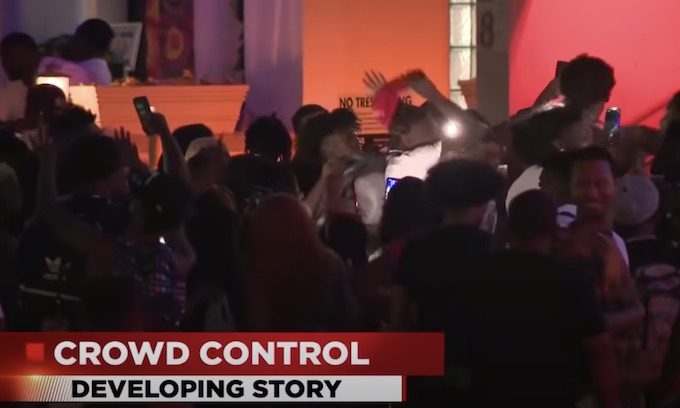
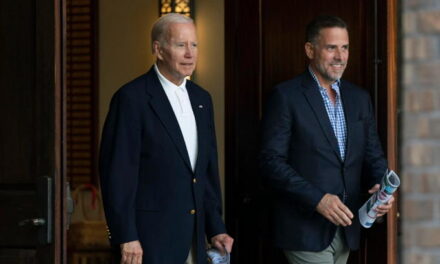
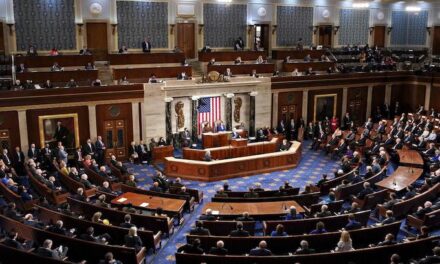
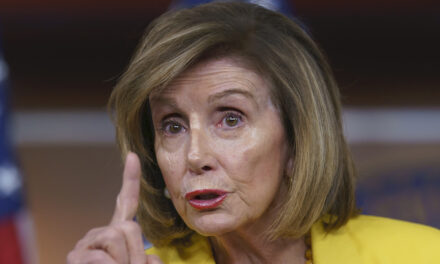
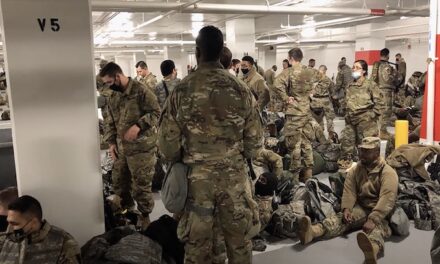







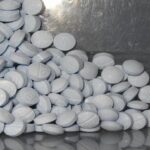
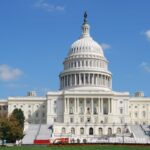
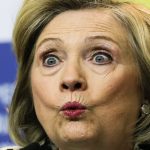
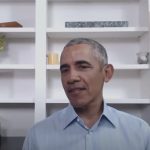
““I was very disappointed,” Stephen Hunter Johnson, chairman of Miami-Dade’s Black Affairs Advisory Committee,”. Yep Stephen Hunter Johnson, it is ok for people to steal, destroy property, assault people and break curfew. Stephen Hunter Johnson, I am sure that if your house and property was destroyed by these so called people of color, you would certainly call the police racist, if they tried to arrest the people of color, who destroyed your property, wouldn’t you??????
TO HIM< of course it's ok for them to do that.. "RACISM" is the reason, don'tcha know..
People are people, some of color and some White. Laws are for both groups of people.
“Clements said police have been “tolerant” of peaceful partying in the streets, but he said there are some among the crowds that have no intent of following the law. And when officers try to make arrests, crowds encircle them, he said.
What we have here is some blacks think they can break the laws and when arrested cry “Racism” and get away with breaking the Laws.
A black man gets arrested for throwing a brick at a white police officer and gets arrested and the black leaders cry racism.
What would the black leader say if a white man threw a brick at a black man and the white man got arrested?
This whole racist game is just that, “A Game” played by the American-Negroes in order for the blacks go get more free stuff and take advantage of the system.
The racism in this country IS GENERATED by the American-Negroes.
AND in some cases, the left’s rabble rousers, THREATEN THE JUDGE, juries and lawyers, to GET THE CASES dismissed “under the term Reformative justice”..
There is no inalienable right to spring break. When the police say disperse and you remain you deserve the tactics required to gain your compliance.
That curfew was for white supremacists as well. There was no call for only people of colors to leave.
Civilization is based upon common rules of conduct. We really do not need unruly citizens and we certainly do not need to listen to their complaints about acting civilized…..I mean, white.
WIth millions of folks still out of work etc, WHERE THE HELL are these kids, even getting the MONEY TO go on spring break from!?
Money is coming from the Socialist Democrat Party government.
They just gave them $1400.00 of YOUR money to party on.
Other times and other weekends there was no curfew. This time, this weekend there was a curfew enacted. The curfew order was sent out at 4pm for an 8pm curfew. Considering the number of phones being held by the ‘students’ I’d say that they had the means to know about the curfew. Prior to and after 8pm the police made announcements about the curfew and told the crowds to disperse. They opted not to. At 10pm, after giving the crowds plenty of time to leave the area, the cops enforced the law. It wasn’t racist, it was legal. There were plenty of white people in those crowds too so saying people of color were targeted is an outright lie.
Here’s an idea: When the cops tell you to disperse from an area, do it.
They brought their **** behavior to Florida. You may get away with it in NY, Minneapolis, Portland, and Seattle, but you don’t bring it to a red state. If the ones violating curfew thought they were Color Privileged to ignore it and try to stop the police from doing their jobs, so be it.
I wonder. ALL Those vehicles that got demolished Cause of those “Partiers’ stomping on them.. WHO the hell pays to get the repaired??
IMO THE PARENT(S) OF these brats should all be on the hock for it. EVERY DAMN one of them.
Unnecessary force?
Announcing a curfew didn’t work. Asking politely didn’t work. Reasoning with them didn’t work. Sirens and lights and bullhorns didn’t work.
Yup. Unnecessary force. They’re just kids. Young people can’t be expected to obey rules meant for old geezers who can’t tolerate noise, loud music, drinking and causing problems for everyone else. Where’s your humanity, man. It’s people like you who are causing the problems. That and the racist police. Fight the power, man!
(Sarcasm ON)… 😉
YET those same kids are supposed to be mature enough, to vote…
AND since tear gas has been ruled Racist, that left pepper balls.
That’s worse than tennis elbow.
The next time some whiny snot nosed snowflake college student demands tuition forgiveness, show these spring break videos to justify their worthiness–or lack thereof.
WHAT worthiness??